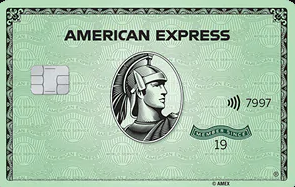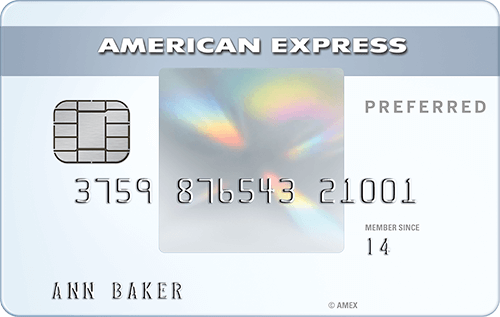The Perfect Pair: Best Credit Cards for Beginners to Maximize Travel Rewards
How to Start Your Travel Points Journey with the Right Card Duo
When people who have been collecting points and miles for years, or decades, talk to those getting started, they often overlook how things we take for granted are totally new concepts to the ones we’re talking to. They don’t care which airplane has the best business class hard product to fly from New York to London. All the newbies want to know is how they can get started earning points they can use to pay for their travels as we do.
There are some basics I’ve laid out in this post, which is an excellent place to start. Eventually, you’ll get a message or text asking what credit card they should apply for. Without knowing details about specific trips they want to take (which they might not even know yet), I think the combo of the two cards discussed below is a solid recommendation for those just getting started.
Having the American Express Green and the American Express Everyday Preferred gives a combination of the ability to earn points across many bonus categories and an easy-to-understand program to redeem points with Membership Rewards.
American Express Green Card

The Green Card is a great choice for those who travel and are just getting started collecting points. It earns 3x Membership Rewards for travel expenses such as flights, hotels, transit, and taxi/rideshares. It also earns 3x Membership Rewards at restaurants worldwide.
Cardholders get a $189 CLEAR credit and a $100 Loungebuddy each calendar year.
The Green Card has no foreign transaction fees.
Currently, the Green Card is offering a sign-up bonus to new members of 40,000 Membership Rewards points after spending $3,000 in the first 6 months. We’d appreciate it if you want to sign up for the card if you’d use our referral link, We do get a referral bonus of Membership Rewards points if you sign up using our link.
The annual fee for the Green Card is $150.
American Express Everyday Preferred

The Everyday Preferred card from American Express is a great card for home expenses. It earns 3x Membership Rewards on spending at supermarkets, up to $6,000 per year, and 2x points for gas station purchases.
For each statement cycle that you use the Everyday Preferred card for 30 transactions or more, you receive a 50% bonus on all points earned. That includes the points earned in the bonus categories.
The Everyday Preferred charges a 2.7% foreign transaction fee, so it’s best to leave this card at home when traveling outside the US.
Currently, the sign-up bonus for the Everyday Preferred is 15,000 Membership Rewards points after spending $2,000 in the first six months. You can sign up for the card by using our referral link. We do get a referral bonus of Membership Rewards points if you sign up using our link.
The annual fee for the Everyday Preferred is $95
Membership Rewards
Both of these cards earn points in American Express’ Membership Rewards program. While there are many uses for Membership Rewards points, you’ll want to make sure someone new to points knows the best value is when transferring the points to an airline or hotel, loyalty program.
Membership Rewards is a good program for beginners because of the number of transfer partners they have.
Airline Programs
- Aer Lingus Aerclub
- Aeromexico Club Premier
- Air Canada Aeroplan
- Air France / KLM Flying Blue
- ANA Mileage Club
- Cathay Pacific Asia Miles
- Avianca LifeMiles
- British Airways Executive Club
- Delta SkyMiles
- Emirates Skywards
- Etihad Guest Miles
- Hawaiian Airlines HawaiianMiles
- Iberia Plus Miles
- JetBlue TrueBlue
- Qantas Frequent Flyer
- Singapore KrisFlyer Miles
- Virgin Atlantic Flying Club
Hotel Programs
- Choice Privileges Rewards
- Hilton Honors
- Marriot Bonvoy
There are several programs that a newbie can understand, like Delta SkyMiles or JetBlue TrueBlue. Redemptions on those airlines are straightforward, and there are no worries about having to explain how to book with partner airlines or airline alliances. If they want to book a flight on American or United, you can help them out using British Airways points and Aeroplan.
Advantages
If you want to get someone hooked on collecting points and miles, a quick win is the best approach. The sign-up bonuses for these two cards will provide more than enough points for one, or even two, round-trip domestic airline tickets. There’s no greater sales pitch than success.
These two cards also have reasonable spending requirements for their sign-up bonuses. Remember, some people will have a problem meeting a $5,000 spending requirement on a card in three months. Once again, you want to get someone started with an achievable goal. Don’t start out setting the bar too high, so they’ll get disappointed and give up before getting started.
Getting an AMEX card also allows taking advantage of AMEX Offers. Once again, an easy win and simple to understand. American Express also offers occasional bonuses when transferring points to partners, which might not be as useful to someone just getting started but does show the potential that earning points has in the long run.
Downsides
No plan is perfect. I realize that some people will say that I’m crazy for suggesting a newbie sign up for AMEX cards. American Express is a horrible bank, with the RAT Team clawing back points and canceling accounts left and right. Someone new to points should be getting Chase cards because of 5/24.
My response is that a person who is brand new to points, who is going to be using their cards for regular spending at supermarkets, gas stations, restaurants and travel expenses, isn’t going to have to worry about the RATs coming after them. Also, if you tell someone who’s never done this before that they have to worry about signing up for more than five new credit cards in the next two years, they’re going to tell you that you’re crazy. Anyway, they still have 3 slots left to fill, and you can point them in the direction of Chase and Ultimate Rewards or their co-brand cards once they’ve gotten their footing.
Another downside is the acceptance of AMEX cards isn’t as widespread as those from MasterCard or VISA. You’ll still see places in the U.S. that don’t take AMEX, but it’s an even more significant problem outside the U.S. The farther you travel from the big cities, the more problems you’re likely to have. It’s almost a necessity to have a non-AMEX card from a different bank as a backup, especially when traveling outside of the US.
Final Thoughts
The combination of the American Express Green Card and the Everyday Preferred is a good combo for those just getting started with earning points to pay for travel. The relatively low spending requirements for the sign-up bonuses, coverage over many of the main spending categories, bonus earning for everyday spending, and the ability to use points for travel with one of the easier-to-understand rewards programs in Membership Rewards are some of the reasons this combo makes sense.
Sure, you can go and poke holes in this plan; I even gave you a head start. This is a good first step for someone just dipping toes into the pool. You’re setting them up with the opportunity to earn points right off the bat, showing them the potential of earning points with everyday spending with bonus categories and earning points in a program that is easy to grasp, even for beginners.
Want to comment on this post? Great! Read this first to help ensure it gets approved.
Want to sponsor a post, write something for Your Mileage May Vary, or put ads on our site? Click here for more info.
Like this post? Please share it! We have plenty more just like it and would love it if you decided to hang around and sign up to get emailed notifications of when we post.
Whether you’ve read our articles before or this is the first time you’re stopping by, we’re really glad you’re here and hope you come back to visit again!
This post first appeared on Your Mileage May Vary

5 comments
The reason I disagree with you about this is that if someone is really new to this, Chase is going to offer a lot more flexibility on redemptions by combining something like a Freedom Unlimited and Sapphire Preferred (or even Reserve). I’ve always found AMEX points really only have value over Chase if transferring them directly to airlines for high value rewards (like int’l first class redemptions). I think you’re beginner at this is most likely going to be better served with a good option for booking directly and offsetting a cost with points. If that is how they’re likely to redeem, Chase (or even something like an Arrival+ may be better suited for them.
Obviously, it all comes down to how you spend on what your goals are for redemptions. But for someone like me who earns all my points through business spend but redeems almost exclusively for family vacations, I get a lot more bang for my buck from Chase points than I ever did from Amex points and with more and more airlines moving to dynamic reward pricing, I think that will continue.
Curious, which redemptions with Chase are the most valuable to you? I’ve found limited use for them.
And while just suggesting a newbie get a travel cash card, like a Capital One or Arrival+, sounds like a good idea, I’d want to get them started learning about transferring points to airlines and not just redeeming points to offset cash tickets. That way you’ll show what’s possible for aspirations redemptions for which they can set goals and make a plan to meet them.
I agree 100% with you David. For me the Chase portfolio beats Amex. If you play your cards right the Chase combo is hard to beat. I’ve been with them ever since the Chase Sapphire came out in 2016 and they get the lions share of usage for the points and travel game.
I am agreeing and disagreeing with you. I think for the newbie who is going to travel occasionally (a couple of times per year at most), the Amex EDP is indeed the best choice. It gives a lot of flexibility and earns at a good clip — especially if you use it for all of your daily spend. I am not sure why one would recommend two Amex cards to someone getting started out…. there are still too many places that don’t take Amex, so you should suggest an alternate that’s Visa/MC. For us, it’s the Citi Double Cash. It doesn’t see enough spend to make a big dent, maybe $750 a month at most, so 2% back with no annual fee is a good value for a card that sees a small annual spend.
I know people love to hock the Chase Sapphire cards… they don’t have a big advantage over Amex anymore, and their transfer partners are far more limited than Amex. Glad you didn’t push that one. In the end, though, it can all depend on which airlines give you best service from your home airport.
If there wasn’t a fee associated with transferring Amex points to the airlines, it would be a great system. I would like the ability to transfer points to Delta SkyMiles, but don’t really want to pay to do so. Wish there was another option out there.